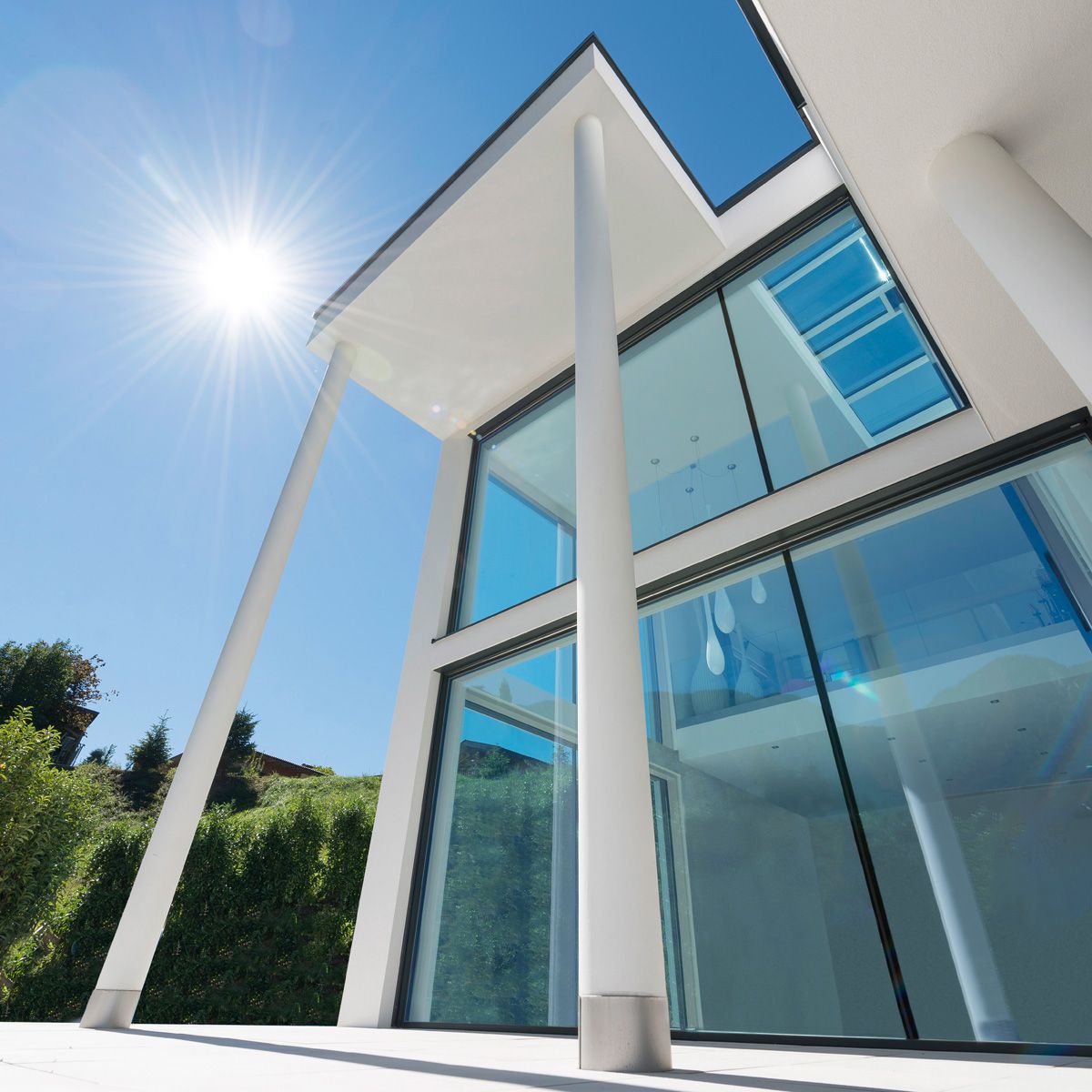
GSW // NOT ALL TEMPERED GLASS IS TEMPERED
What is the difference between heat-strengthened (HS) and fully tempered (FT) glass? How do I determine which is needed for my project?
Heat-strengthened (HS) glass has been subjected to a specifically controlled heating and cooling cycle, and is generally twice as strong as annealed glass of the same thickness and configuration. It has a greater resistance to thermal loads than annealed glass and when broken, the fragments are typically larger than those of fully tempered glass and initially may remain in the glazing opening. Heat-strengthened glass is not a safety glass product as defined by building codes. It is intended for general glazing, and is usually the choice for commercial applications where additional strength is desired to withstand wind load and thermal stress, but the strength of tempered glass is not necessary or required by building safety codes. HS glass can’t be cut or drilled after heat-strengthening and any alterations, such as edge grinding, sand blasting or acid etching, can cause premature failure.
Tempered glass is approximately four times stronger than regular annealed glass of the same thickness and configuration. When broken, it usually breaks into many relatively small fragments, which are less likely to cause serious injury in most applications. Tempered glass is often referred to as “safety glass” because it meets the requirements of various code organizations for safety glazing. This type of glass is usually intended for sliding doors, storm doors, building entrances, bath and shower enclosures, interior partitions and other uses requiring superior strength and safety properties. Tempered glass cannot be cut or drilled after tempering, and any alterations, such as edge grinding, sand blasting or acid etching, can cause premature failure.
It is important to note that the heat-treating process creates optical distortion that can be reduced but not eliminated. Guardian recommends GSW glass manufacturer, be consulted and mock-ups be viewed and approved whenever possible.

Improve Security, Safety and Comfort for your project
Toughened glass is made from annealed glass that has been heated to approximately 650⁰C and then rapidly cooled. Due to the increased heat treatment and rapid cooling of the glass, especially between the surface and the inside of the glass, the treatment produces different physical properties. This results in compression stress on the surface and improved bending strength of glass.
Before toughening, the glass must be cut to size or pressed to shape. This is because once it is toughened, it cannot be re-worked on. Toughened glass is widely used in a number of applications.
Characteristics of Toughened Glass
Toughened glass is four to five times stronger than annealed glass of the same size and thickness against impact. Toughened glass has higher thermal strength and can withstand a high temperature differential up to 250°C.Toughened glass is considered as safety glass. It is difficult to break and even in the event of a breakage, disintegrates into small globules, which are relatively harmless.
Toughening does not alter the basic characteristics of glass such as light transmission and solar radiant heat properties.
After heat treatment, the surface of toughened glass has the same resistance to surface damage as annealed glass. Toughened glass cannot be cut, drilled or altered.
Heat soak test is recommended to be carried out on Toughened glass that is used for overhead and horizontal application, to prevent the spontaneous breakage caused due to nickel sulphide inclusion.
Properties of toughened glass
| Properties | Toughened glass |
| Thermal Shock Resistance | Up to 2500C |
| Mechanical strength | Four to five times stronger than annealed glass |
| Tensile strength | 65 MPa |
| Bending strength | 120 – 200 N/mm2 |
| Surface compression | > 95 MPa |
| Design Stress for Architectural purposes | 50 MPa |
| Fragmentation | Small round crystals |
| Conducive for processing | Cannot be cut after toughening |
Benefits:
Toughening increases tensile strength, thermal shock resistance and safety of normal glass. It also increases its heat withstanding capacity. Because of these properties, toughened glass is preferred in applications where strength, safety and thermal resistance are significant.
Strength & Safety Considerations
- Four to five times stronger than annealed glass
- Two to three times stronger than heat strengthened glass
- Fragments into small, relatively harmless pieces, reducing the likelihood of injury
Resistance to Thermal Breakage
Uneven heating due to direct sunlight makes glass expand and contract at different rates. This difference in the rates, creates stress in glass which may lead to breakage. When temperature differential is above 50°C, the risk of thermal breakage is high for annealed glass and when the difference is up to 250°C, the risk of thermal breakage is prevented by using toughened glass.
Thermal Breakage Pattern
Thermal breakage starts at the edge and is perpendicular to the glass edge. Breakage may be single or multiple depending on the built up stress. Several cracks indicate high thermal stress across the glass pane. A fully toughened glass has significantly higher edge strength to withstand chances of thermal breakage.
Applications of Toughened Glass
Toughened glass is specifically designed for use in areas where there is a high risk of contact and breakage. It can be used for exteriors and interiors, such as facades, showroom shelves, dividers, shower cabins, doors, etc.








